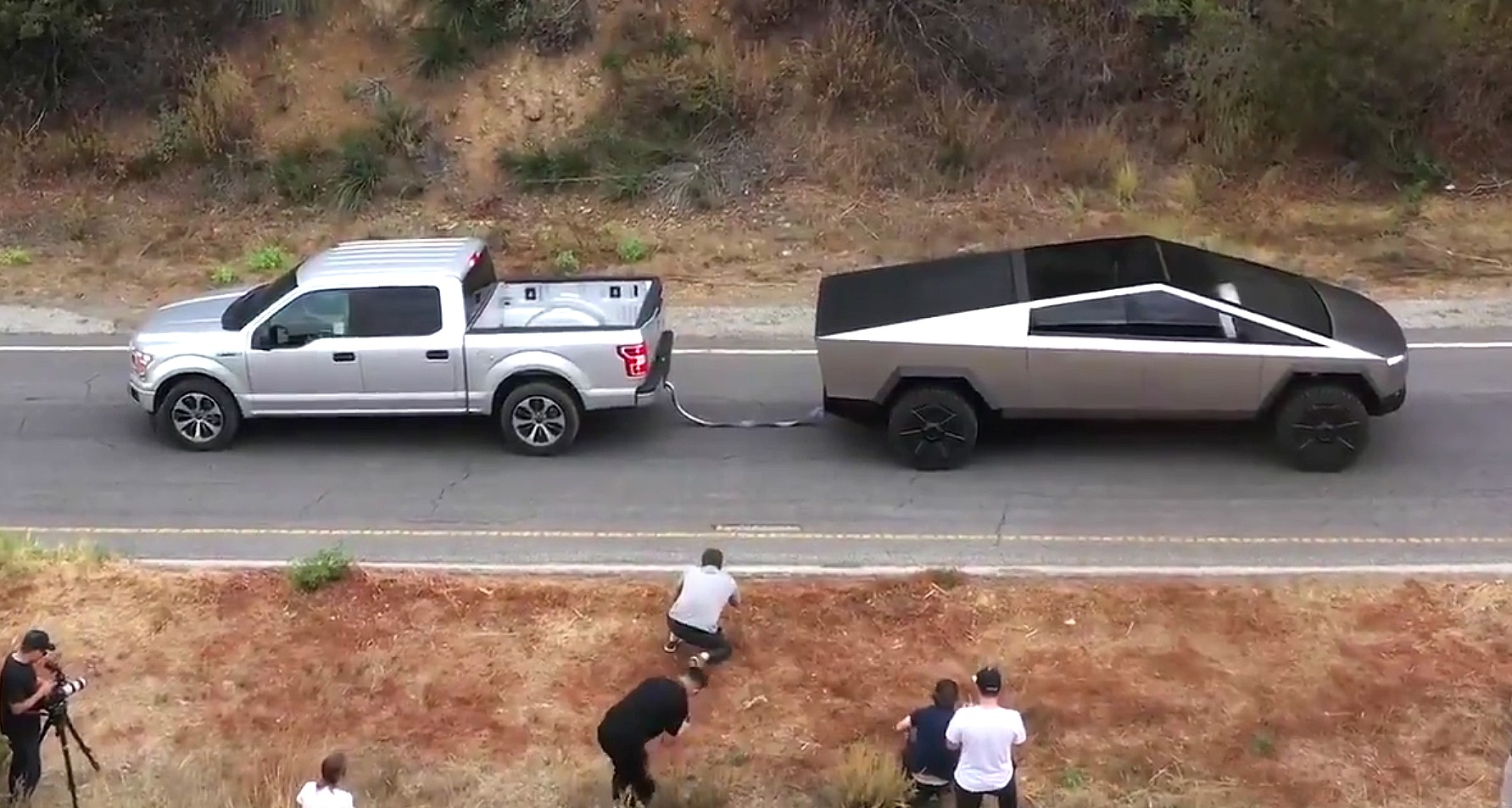
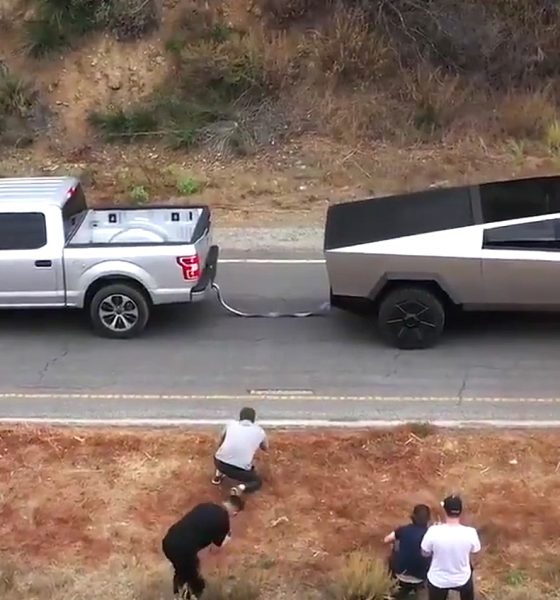
News
Opinion: The Tesla Cybertruck accelerated the Ford F-150 Lightning’s release, like it or not
During the Ford F-150 Lightning’s unveiling, the veteran automaker proudly presented a vehicle that has the potential to carry the company well into the age of electric cars. But inasmuch as the F-150 Lightning is impressive and worthy of its flagship EV status, Ford may have a competitor and unlikely ally to thank for its release. This competitor is the steel beast from Silicon Valley, the Tesla Cybertruck.
A different landscape
It should be noted that just a few years ago, the EV landscape was much different for Ford and its fellow veteran automakers. In 2019, it appeared that the electric pickup market was destined to be yet another niche segment populated by expensive EVs that were out of reach for the conventional buyer. Back then, the Rivian R1T seemed to be the electric pickup truck to beat, after it debuted in late 2018 and impressed the car community with its novel features.
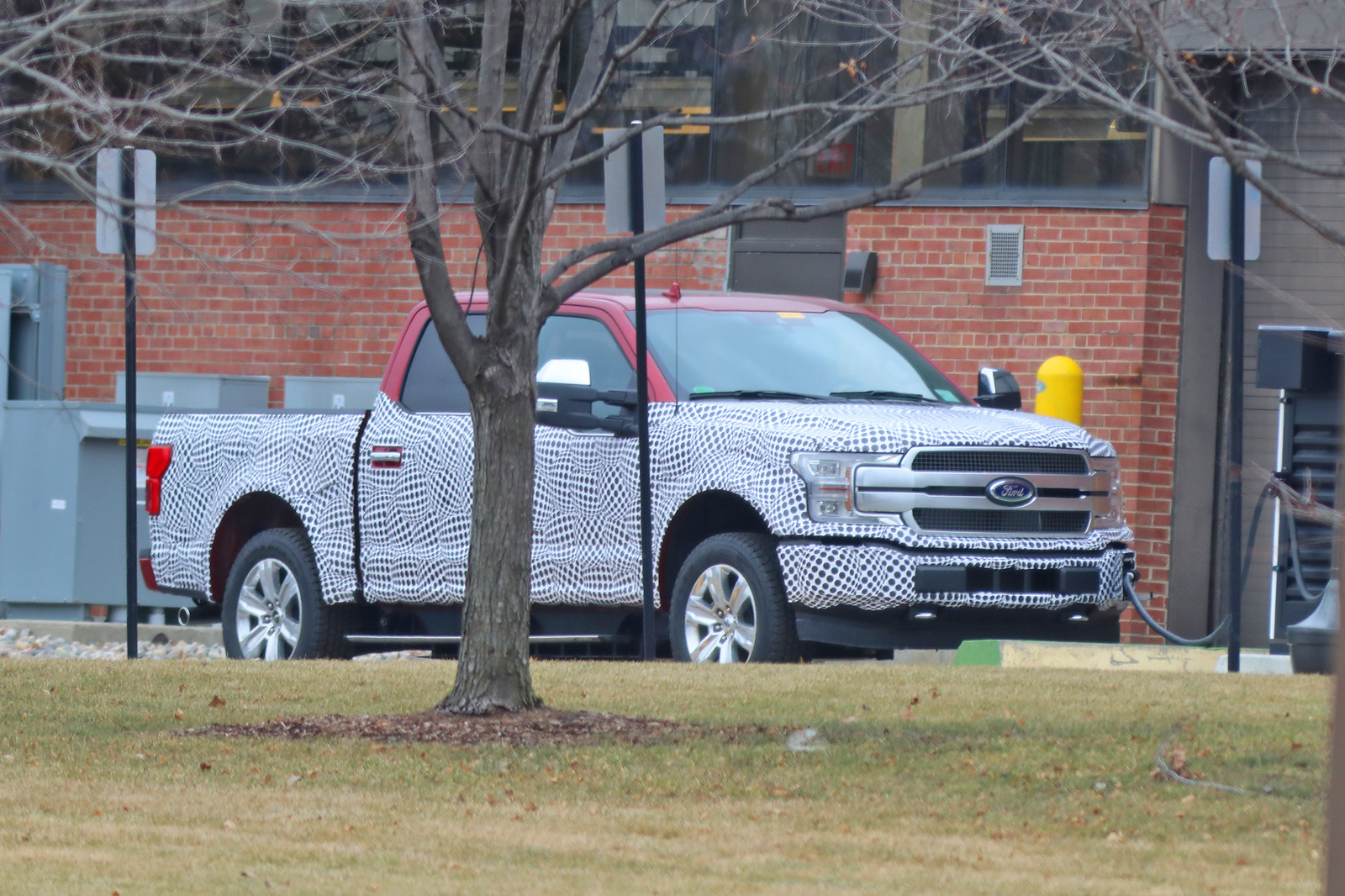
Inasmuch as Rivian captured the attention of EV enthusiasts, legacy auto, at least from the perspective of a layman, seemed to be quite uninterested in the battery-electric truck market. This was one of the reasons why Ford inspired a ton of headlines in January 2019 when then-president of global markets and now-CEO Jim Farley announced that the F-Seres was getting electrified. “We’re going to be electrifying the F-Series — battery electric and hybrid,” he said.
It was a shock to the United States’ automotive industry, with longtime industry observer and Autoline This Week host John McElroy highlighting the gravity of Farley’s statement. “When he says ‘battery-electric,’ what I’m taking that to mean is a battery electric vehicle. Pure electric. They’ve said they would have a hybrid plug-in version of the F-150. But this is different than what they’ve talked about in the past,” McElroy said.
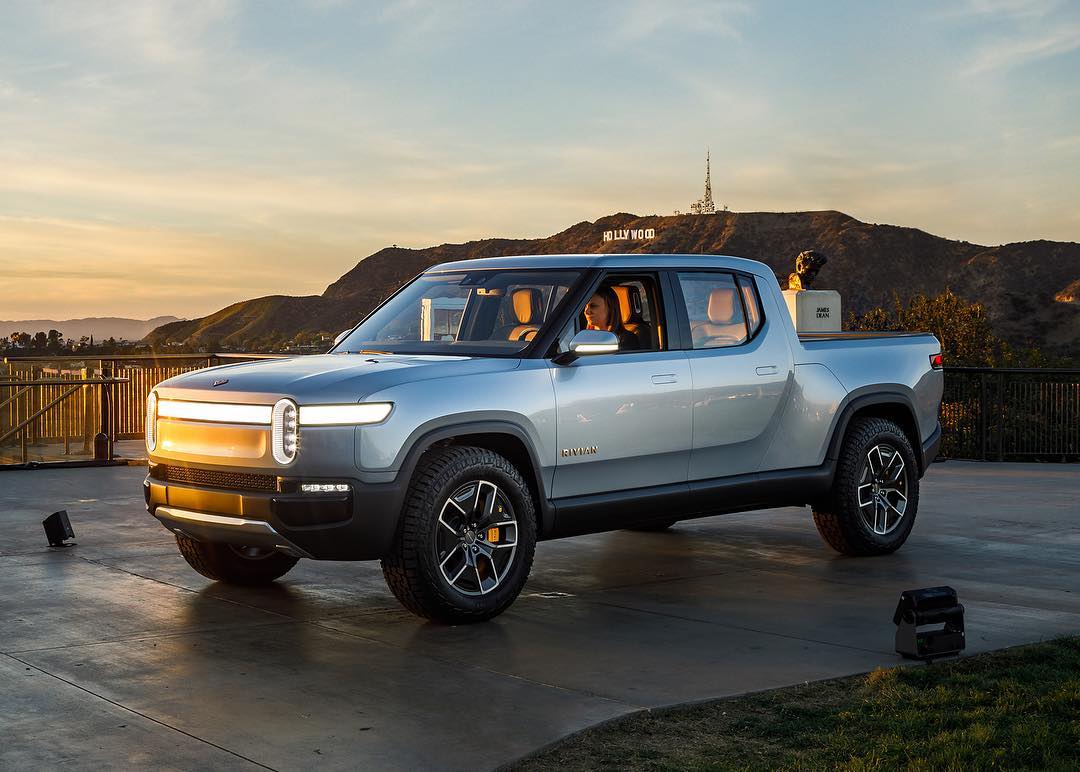
A noncommittal stance
But while Ford’s announcement showed that it could talk the talk, the company didn’t necessarily walk the walk. Even after Ford showed off the capabilities of the electric F-150 by having the vehicle pull a freight train loaded with other F-150s, the company proved very elusive about its plans for the vehicle. Speaking to Yahoo Finance’s The First Trade following the electric F-150’s 1-million-pound demonstration, Ford Chief Product Development Officer Hau Thai-Tang was asked about the upcoming vehicle’s release.
The Ford executive’s answers about the all-electric truck were very reserved. When pressed further, the executive simply remarked that the battery-electric F-150 was “still a couple of years out,” though he did highlight that the F-150 Hybrid would be released first.
This noncommittal stance was prevalent for much of 2019. Ford’s longtime rival, General Motors, also announced then that it had a program for an all-electric pickup truck. During a quarterly earnings call, GM CEO Mary Barra stated that the company intends to “create an all-electric future that includes a complete range of EVs, including full-size pickups. She also noted that details about GM’s battery-electric pickup would be shared “when competitively appropriate.”
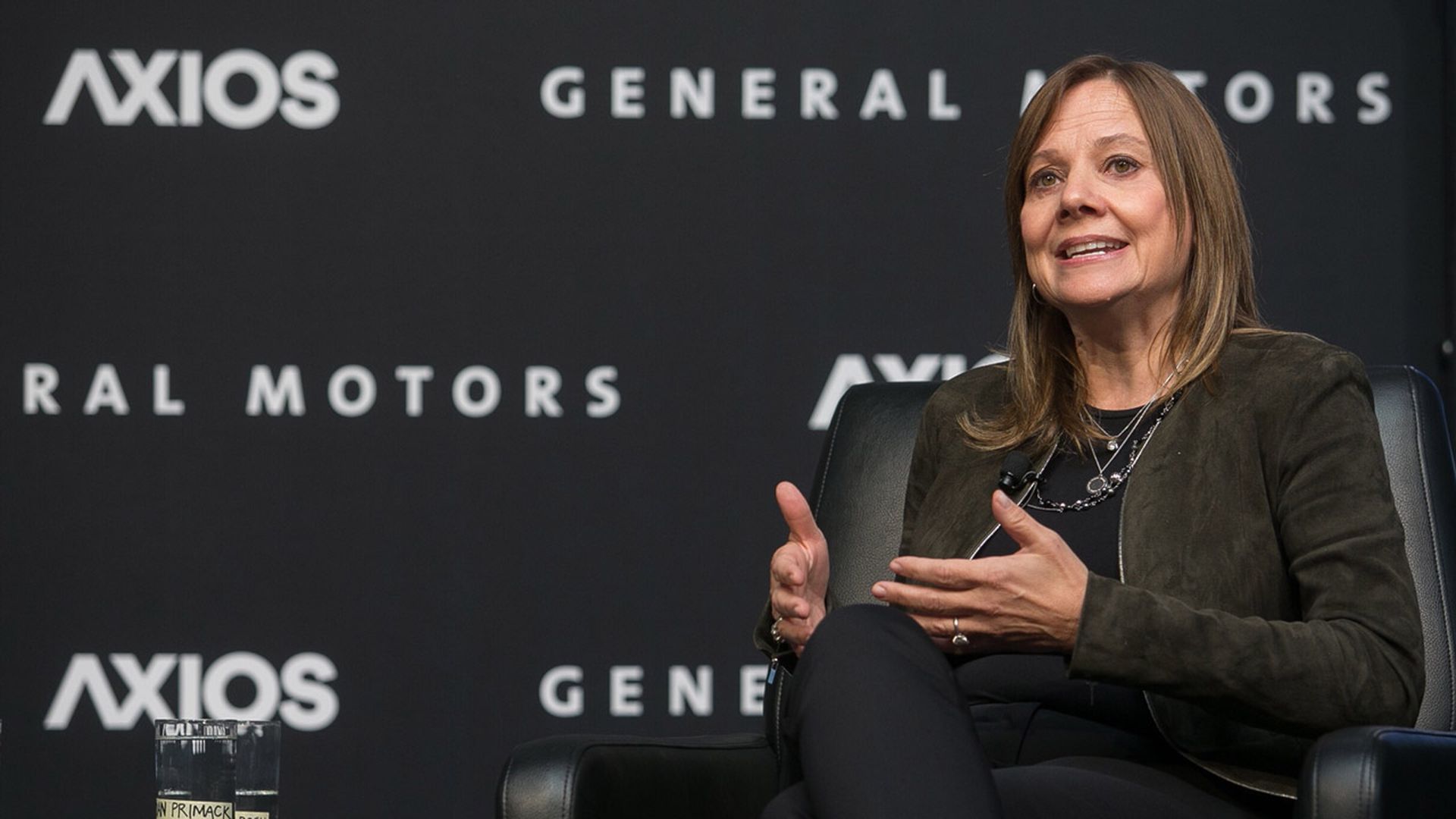
A watershed moment
But something happened at the end of 2019. In November 2019, Tesla took the wraps off its all-electric pickup truck. It was a vehicle that Elon Musk has been mentioning for years, and in the months leading up to its unveiling, the CEO had been setting the public’s expectations. Musk noted that the Cybertruck would probably be polarizing, and he even stated that if it were to flop, Tesla would simply make a more conventional pickup truck. The Cybertruck proved to be everything that Musk said it was, and more. With its angular design and unpainted steel body, the Cybertruck was unlike any vehicle on the road, and it barely looked like a pickup truck.
Its appearance, together with the Armor Glass demonstration that ended with the Cybertruck’s driver’s side windows getting cracked, resulted in the futuristic vehicle becoming a meme overnight. Tesla fans learned to love it, and critics made sure to point out how strange and ugly it looked. But amidst all the memes about the Cybertruck’s looks and its failed Armor Glass demonstration lay something notable—Tesla’s all-electric pickup truck had some serious specs.
While the Cybertruck’s looks were amusing to critics, its specs were very real, and most of all, it was cheap for the features that it offers. Starting at less than $40,000 and capable of towing 14,000 pounds, it was a threat to the status quo, especially as it could become attractive to businesses and people who value low operating costs and a rapid return of investment. After all, Tesla may be known for its delays, but the company never overpromises on its vehicles’ capabilities.
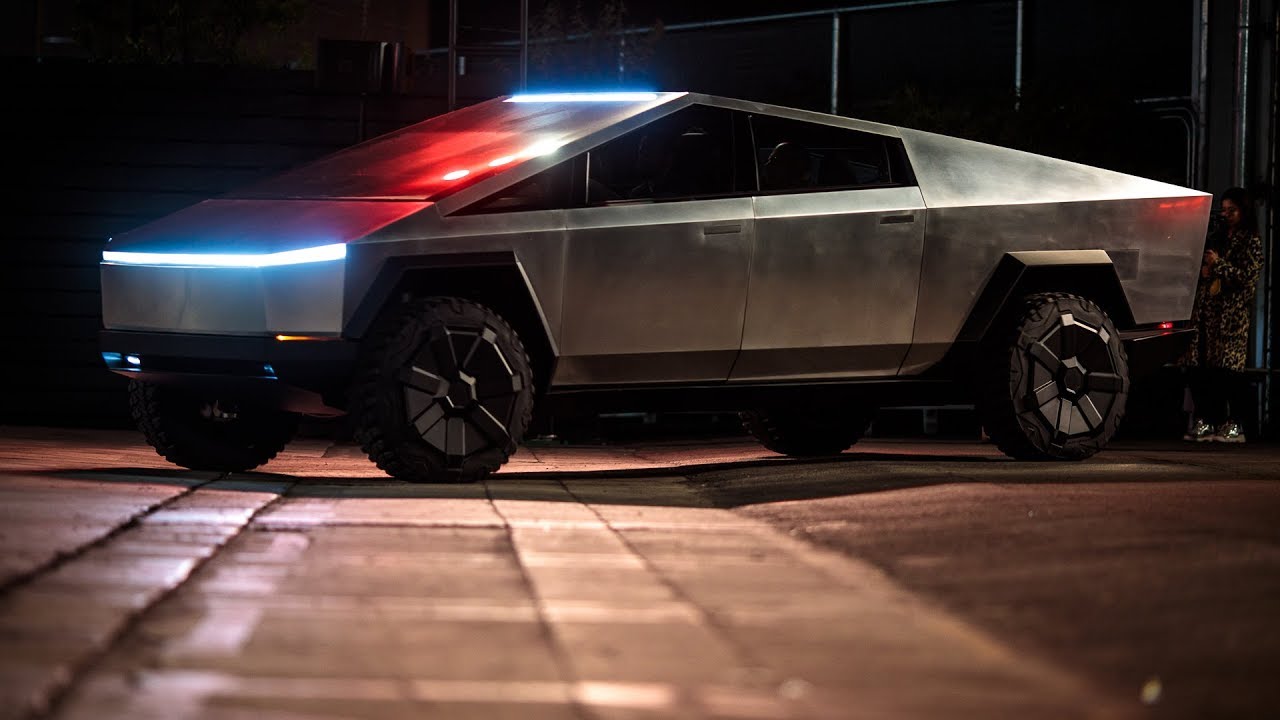
An accelerated shift
Something seemed to change after the Cybertruck was unveiled. Just months after the Cybertruck’s launch, GM revealed its Ultium batteries, which was announced together with a number of new all-electric models. By October 2020, GMC launched the Hummer EV, a gargantuan all-electric pickup truck designed for serious off-roading. GM may never admit it, but signs pointed to the Hummer EV’s development being rushed. The automaker unveiled the vehicle with a CGI video and a prototype that barely moved.
This was very different from the strategy of Tesla and Rivian, of course, both of whom unveiled fully-working trucks. Tesla even had the Cybertruck take attendees for a test ride for several hours following its unveiling. GM Chief Engineer Al Oppenheiser admitted as such in a statement to EV publication Green Car Reports. Oppenheiser revealed that the Hummer EV was only 18 months into its development cycle when it was unveiled, which was a very short time for a legacy automaker.
“Interestingly enough, we don’t have a vehicle yet. We’re building our first test vehicle as we speak; the vehicle you see in the video is our display vehicle,” he said. GM, of course, eventually started demonstrating the Hummer EV’s capabilities in real-life settings later on. But by then, it was practically evident that the automaker was moving as fast as it could to enter the all-electric pickup truck market with a competitive edge.
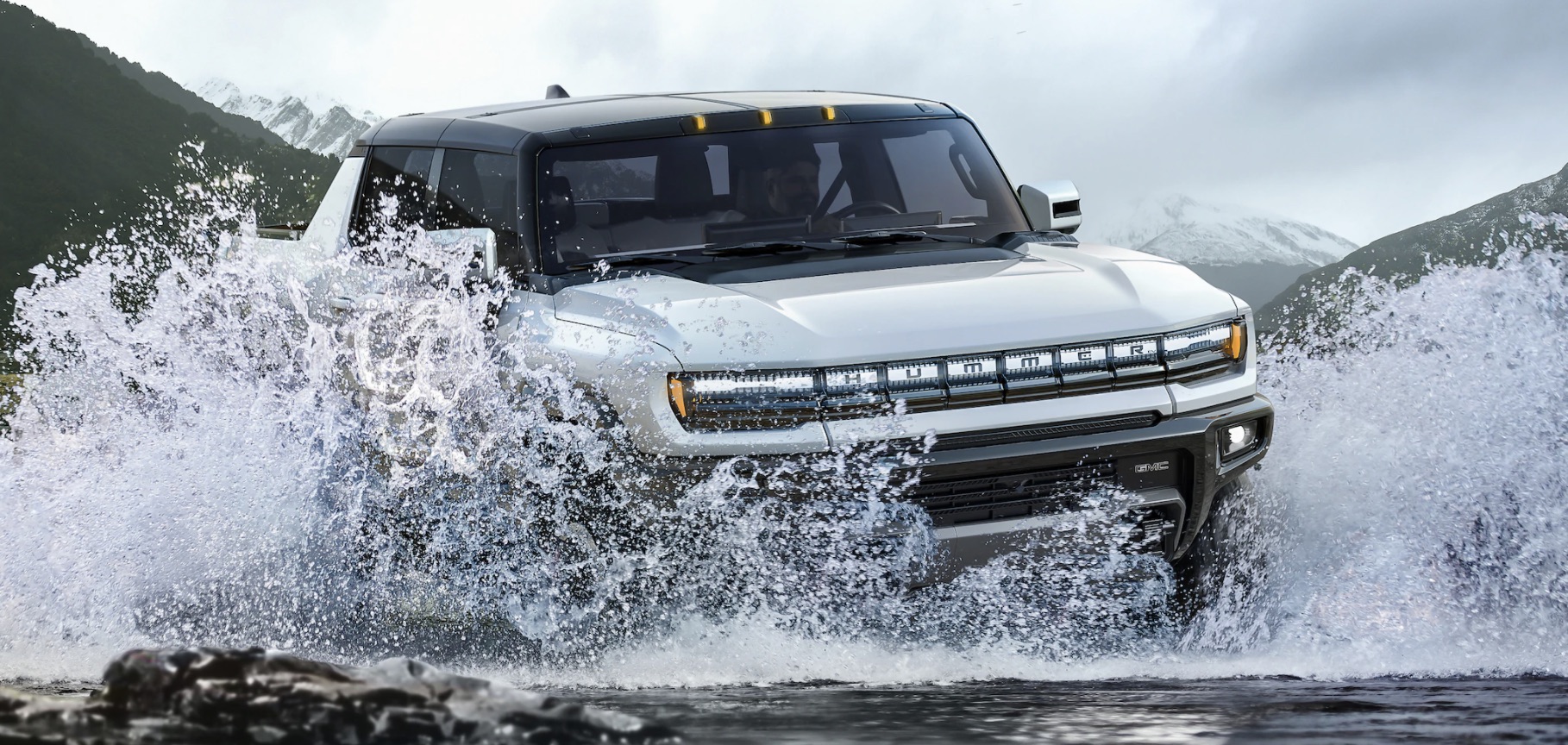
Ford seemed to have accelerated its battery-electric truck program as well, and now the Ford F-150 Lightning is here. And unlike the Hummer EV, it seems to be ready to go. The Rouge facility seems ready to produce the vehicle, though the ongoing chip shortage is still looming in the background. There’s also the issue of securing enough batteries for the vehicle, considering that the F-150 is expected to demand equally large battery packs to hit its targeted 300 miles of range.
Overall, it appears that the rush is now on to produce the first mainstream electric pickup truck. And so far, it appears that the battle will be waged by the Ford F-150 Lightning and the Tesla Cybertruck, considering their comparable starting prices. But while the F-150 Lightning loses out in key features such as range and towing capacity, it does have the pedigree and reputation of a tried and tested pickup brand and a design that is as conventional as it is comfortable. And that, ultimately, could be a trump card for the electric revolution as a whole.
The battle is on for America’s most popular automotive segment.
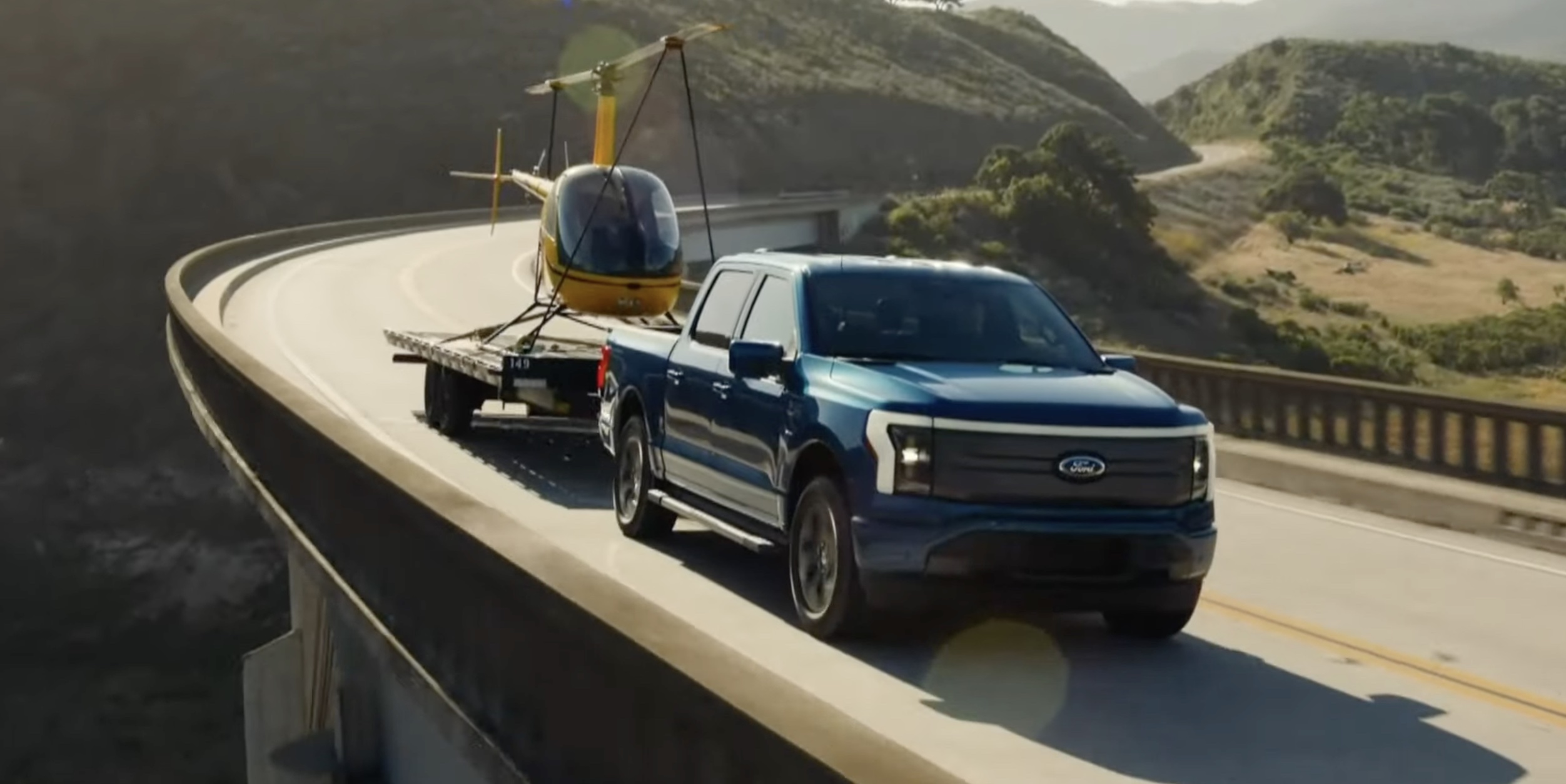
Don’t hesitate to contact us for news tips. Just send a message to tips@teslarati.com to give us a heads up.

News
Tesla FSD V14.2.1 is earning rave reviews from users in diverse conditions
Tesla’s Full Self-Driving (Supervised) software continues its rapid evolution, with the latest V14.2.1 update drawing widespread praise.
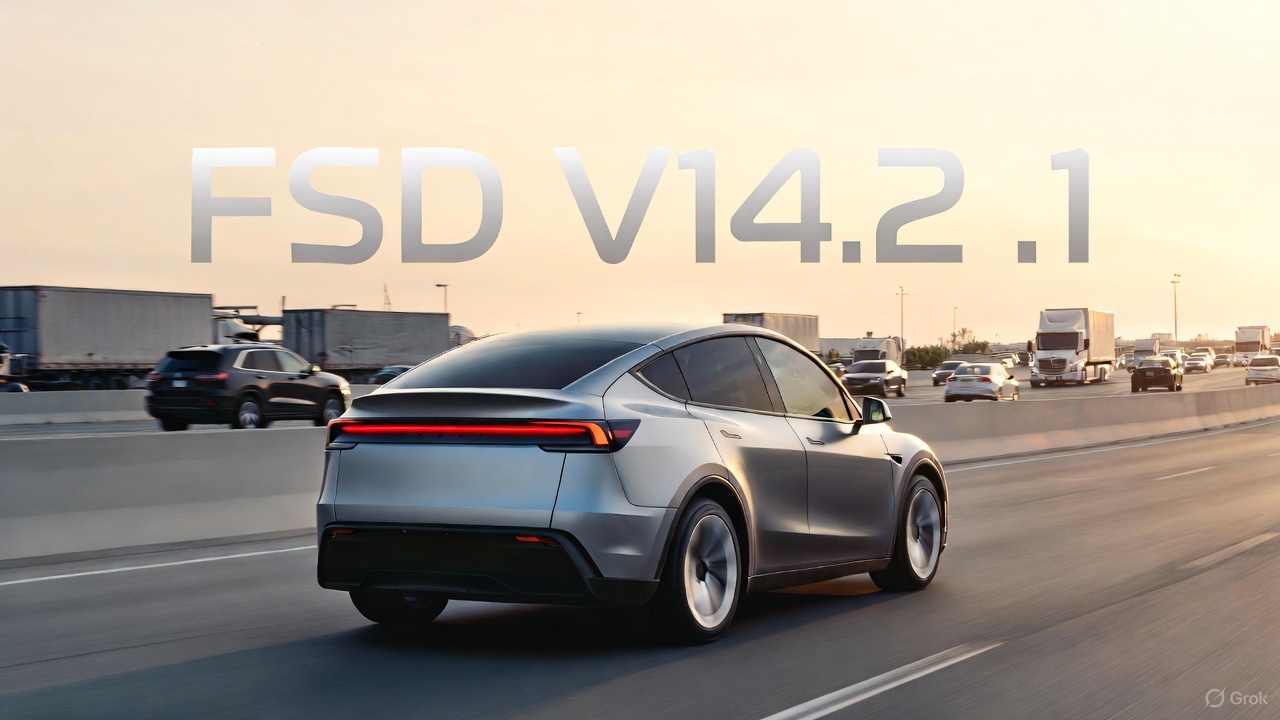
Tesla’s Full Self-Driving (Supervised) software continues its rapid evolution, with the latest V14.2.1 update drawing widespread praise for its smoother performance and smarter decision-making.
Videos and firsthand accounts from Tesla owners highlight V14.2.1 as an update that improves navigation responsiveness, sign recognition, and overall fluidity, among other things. Some drivers have even described it as “more alive than ever,” hinting at the system eventually feeling “sentient,” as Elon Musk has predicted.
FSD V14.2.1 first impressions
Early adopters are buzzing about how V14.2.1 feels less intrusive while staying vigilant. In a post shared on X, Tesla owner @LactoseLunatic described the update as a “huge leap forward,” adding that the system remains “incredibly assertive but still safe.”
Another Tesla driver, Devin Olsenn, who logged ~600 km on V14.2.1, reported no safety disengagements, with the car feeling “more alive than ever.” The Tesla owner noted that his wife now defaults to using FSD V14, as the system is already very smooth and refined.
Adverse weather and regulatory zones are testing grounds where V14.2.1 shines, at least according to testers in snow areas. Tesla watcher Sawyer Merritt shared a video of his first snowy drive on unplowed rural roads in New Hampshire, where FSD did great and erred on the side of caution. As per Merritt, FSD V14.2.1 was “extra cautious” but it performed well overall.
Sign recognition and freeway prowess
Sign recognition also seemed to show improvements with FSD V14.2.1. Longtime FSD tester Chuck Cook highlighted a clip from his upcoming first-impressions video, showcasing improved school zone behavior. “I think it read the signs better,” he observed, though in standard mode, it didn’t fully drop to 15 mph within the short timeframe. This nuance points to V14.2.1’s growing awareness of temporal rules, a step toward fewer false positives in dynamic environments.
FSD V14.2.1 also seems to excel in high-stress highway scenarios. Fellow FSD tester @BLKMDL3 posted a video of FSD V14.2.1 managing a multi-lane freeway closure due to a police chase-related accident. “Perfectly handles all lanes of the freeway merging into one,” the Tesla owner noted in his post on X.
FSD V14.2.1 was released on Thanksgiving, much to the pleasant surprise of Tesla owners. The update’s release notes are almost identical to the system’s previous iteration, save for one line item read, “Camera visibility can lead to increased attention monitoring sensitivity.”
News
Tesla FSD Supervised ride-alongs in Europe begin in Italy, France, and Germany
The program allows the public to hop in as a non-driving observer to witness FSD navigate urban streets firsthand.

Tesla has kicked off passenger ride-alongs for Full Self-Driving (Supervised) in Italy, France and Germany. The program allows the public to hop in as a non-driving observer to witness FSD navigate urban streets firsthand.
The program, detailed on Tesla’s event pages, arrives ahead of a potential early 2026 Dutch regulatory approval that could unlock a potential EU-wide rollout for FSD.
Hands-Off Demos
Tesla’s ride-along invites participants to “ride along in the passenger seat to experience how it handles real-world traffic & the most stressful parts of daily driving, making the roads safer for all,” as per the company’s announcement on X through its official Tesla Europe & Middle East account.
Sign-ups via localized pages offer free slots through December, with Tesla teams piloting vehicles through city streets, roundabouts and highways.
“Be one of the first to experience Full Self-Driving (Supervised) from the passenger seat. Our team will take you along as a passenger and show you how Full Self-Driving (Supervised) works under real-world road conditions,” Tesla wrote. “Discover how it reacts to live traffic and masters the most stressful parts of driving to make the roads safer for you and others. Come join us to learn how we are moving closer to a fully autonomous future.”
Building trust towards an FSD Unsupervised rollout
Tesla’s FSD (Supervised) ride-alongs could be an effective tool to build trust and get regular car buyers and commuters used to the idea of vehicles driving themselves. By seating riders shotgun, Tesla could provide participants with a front row seat to the bleeding edge of consumer-grade driverless systems.
FSD (Supervised) has already been rolled out to several countries, such as the United States, Canada, Australia, New Zealand, and partially in China. So far, FSD (Supervised) has been received positively by drivers, as it really makes driving tasks and long trips significantly easier and more pleasant.
FSD is a key safety feature as well, which became all too evident when a Tesla driving on FSD was hit by what seemed to be a meteorite in Australia. The vehicle moved safely despite the impact, though the same would likely not be true had the car been driven manually.
News
Swedish union rep pissed that Tesla is working around a postal blockade they started
Tesla Sweden is now using dozens of private residences as a way to obtain license plates for its vehicles.

Two years into their postal blockade, Swedish unions are outraged that Tesla is still able to provide its customers’ vehicles with valid plates through various clever workarounds.
Seko chairman Gabriella Lavecchia called it “embarrassing” that the world’s largest EV maker, owned by CEO Elon Musk, refuses to simply roll over and accept the unions’ demands.
Unions shocked Tesla won’t just roll over and surrender
The postal unions’ blockade began in November 2023 when Seko and IF Metall-linked unions stopped all mail to Tesla sites to force a collective agreement. License plates for Tesla vehicles instantly became the perfect pressure point, as noted in a Dagens Arbete report.
Tesla responded by implementing initiatives to work around the blockades. A recent investigation from Arbetet revealed that Tesla Sweden is now using dozens of private residences, including one employee’s parents’ house in Trångsund and a customer-relations staffer’s home in Vårby, as a way to obtain license plates for its vehicles.
Seko chairman Gabriella Lavecchia is not pleased that Tesla Sweden is working around the unions’ efforts yet again. “It is embarrassing that one of the world’s largest car companies, owned by one of the world’s richest people, has sunk this low,” she told the outlet. “Unfortunately, it is completely frivolous that such a large company conducts business in this way.”
Two years on and plates are still being received
The Swedish Transport Agency has confirmed Tesla is still using several different workarounds to overcome the unions’ blockades.
As noted by DA, Tesla Sweden previously used different addresses to receive its license plates. At one point, the electric vehicle maker used addresses for car care shops. Tesla Sweden reportedly used this strategy in Östermalm in Stockholm, as well as in Norrköping and Gothenburg.
Another strategy that Tesla Sweden reportedly implemented involved replacement plates being ordered by private individuals when vehicles change hands from Tesla to car buyers. There have also been cases where the police have reportedly issued temporary plates to Tesla vehicles.









